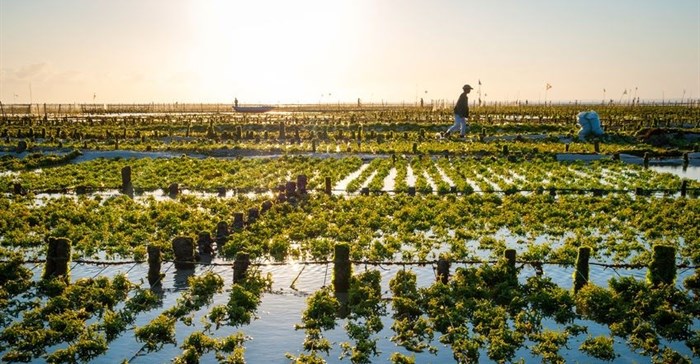
Top stories




The latest brouhaha - backed by the Food and Agriculture Organisation of the UN - has focused on insects, which scientists have promoted as a new source of protein. With news reports covering grasshopper breeding in apartments, short-winged cricket cooking lessons, and taste comparisons between Thai organic bamboo worms and giant mealworms, the issue has captivated the media.
But this frenzy has hardly changed the world's culinary habits, especially in western countries.
There is an alternative marine solution, one that could significantly help, if not guarantee, mankind's survival: algae, which has been popular in Asian cooking for centuries. This abundant resource is even more important considering that it can be cultivated or harvested in the wild. According to the Food and Agriculture Organisation, global algae production has gone from two million tonnes in the 1970s to more than 25-million tonnes in 2013, with 90% of species coming from algaculture and the remainder from the wild. About 60% is used in pharmacology, cosmetology, oras fertiliser.
But 40% ends up on plates in one form or another: fresh, as a condiment, dried, frozen, or mixed in with other ingredients. Algae is eaten every day without most people realising it. Agar-agar, for instance, is an algae additive that has been replacing the gelatin in cooked meats, candy, and biscuits over the past four decades.
Oceans and rivers contain more than 100,000 species of algae, but only 145 of these are consumed in the world, including 24 that are authorised in France: eight species of brown algae (wakame, kombu, thongweed, fucus), 11 of red algae (dulse, nori), two of green algae (sea lettuce) and three of microalgae (spirulina). Rich in protein, iodine, calcium, mineral salts and vitamins, the different types of algae help prevent cardiovascular diseases and boost our immune systems.
These undersea plants are not harmed by land disasters. The only drawback: they are vulnerable to oil spills and contamination by heavy metals, which harm their nutritional qualities.
The French, who grow and harvest 80,000 tonnes of algae along the 2,700km stretch of Brittany coast, consume only 1,500 tonnes a year, compared with the two million tonnes consumed by the Japanese. In their defense, the red tides that pollute Brittany beaches with excrement from intensive pig farms hardly stir up enthusiasm, let alone appetite.
Most foodies who have never travelled to Japan discover algae in sushi bars: maki, miso soup, and wakame salad serve as the introductory trio of the marine vegetable world. Nori, famed for wrapping up maki, is the most consumed algae in the world. Collected in Brittany at low tide, it has a very distinctive taste, similar to Chinese smoked tea. Next up, wakame, a dark green algae found in brine, makes for a great fresh salad with sesame oil and seeds. With its highly salty flavour, wakame is closer in taste to the oyster, and it is generally used in Japanese miso soup.
Kombu is a long brown algae collected in France in the Mole`ne archipelago. Slightly sweeter than the wakame, the kombu is grown in the Finistère department. With dried skipjack shavings, it is one of the two pillars of dashi, the famous aromatic broth that is used as the base ingredient in many Asian dishes. Sea lettuce is also becoming increasingly popular. It, too, grows in Brittany and is used in salads.
Algae tastes good, but that is not all. An algae-based vaccine could help reinforce the immune systems of battery-reared chickens, and prevent them from being stuffed with preventive antibiotics. Tests carried out on 500,000 birds seem promising. - New York Times
Source: Business Day

For more than two decades, I-Net Bridge has been one of South Africa’s preferred electronic providers of innovative solutions, data of the highest calibre, reliable platforms and excellent supporting systems. Our products include workstations, web applications and data feeds packaged with in-depth news and powerful analytical tools empowering clients to make meaningful decisions.
We pride ourselves on our wide variety of in-house skills, encompassing multiple platforms and applications. These skills enable us to not only function as a first class facility, but also design, implement and support all our client needs at a level that confirms I-Net Bridge a leader in its field.
Go to: http://www.inet.co.za